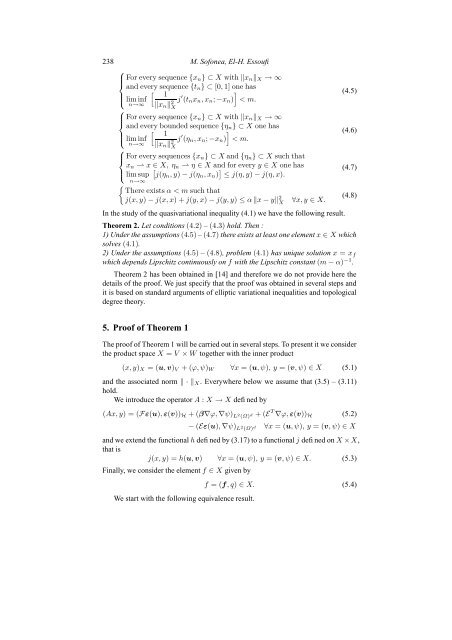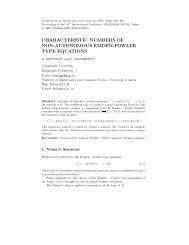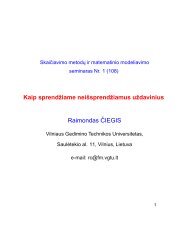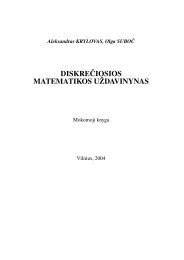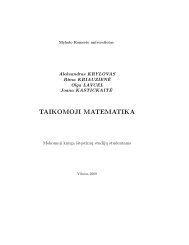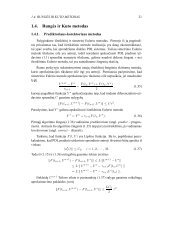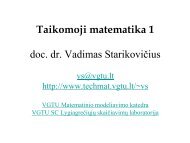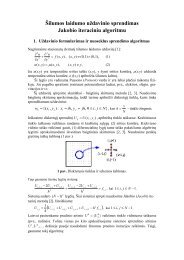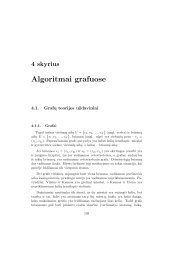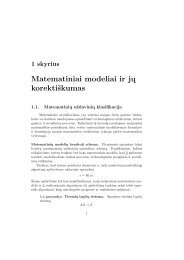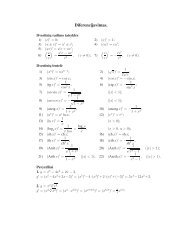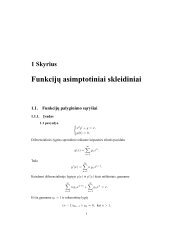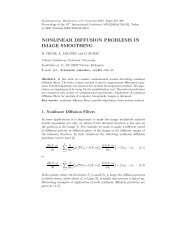a piezoelectric contact problem with slip dependent coefficient of ...
a piezoelectric contact problem with slip dependent coefficient of ...
a piezoelectric contact problem with slip dependent coefficient of ...
Create successful ePaper yourself
Turn your PDF publications into a flip-book with our unique Google optimized e-Paper software.
238 M. S<strong>of</strong>onea, El-H. Essoufi⎧For every sequence {x ⎪⎨n } ⊂ X <strong>with</strong> ‖x n ‖ X → ∞and every sequence {t n } ⊂ [0, 1] one has[1](4.5)⎪⎩ lim infn→∞ ‖x n ‖ 2 j ′ (t n x n , x n ; −x n ) < m.X⎧For every sequence {x ⎪⎨n } ⊂ X <strong>with</strong> ‖x n ‖ X → ∞and every bounded sequence {η n } ⊂ X one has[1](4.6)⎪⎩ lim infn→∞ ‖x n ‖ 2 j ′ (η n , x n ; −x n ) < m.X⎧⎪⎨ For every sequences {x n } ⊂ X and {η n } ⊂ X such thatx n ⇀ x[∈ X, η n ⇀ η ∈ X and for every y ∈ X one has⎪⎩ lim sup j(ηn , y) − j(η n , x n ) ] (4.7)≤ j(η, y) − j(η, x).n→∞{ There exists α < m such thatj(x, y) − j(x, x) + j(y, x) − j(y, y) ≤ α ‖x − y‖ 2 X ∀x, y ∈ X. (4.8)In the study <strong>of</strong> the quasivariational inequality (4.1) we have the following result.Theorem 2. Let conditions (4.2) – (4.3) hold. Then :1) Under the assumptions (4.5) – (4.7) there exists at least one element x ∈ X whichsolves (4.1).2) Under the assumptions (4.5) – (4.8), <strong>problem</strong> (4.1) has unique solution x = x fwhich depends Lipschitz continuously on f <strong>with</strong> the Lipschitz constant (m − α) −1 .Theorem 2 has been obtained in [14] and therefore we do not provide here thedetails <strong>of</strong> the pro<strong>of</strong>. We just specify that the pro<strong>of</strong> was obtained in several steps andit is based on standard arguments <strong>of</strong> elliptic variational inequalities and topologicaldegree theory.5. Pro<strong>of</strong> <strong>of</strong> Theorem 1The pro<strong>of</strong> <strong>of</strong> Theorem 1 will be carried out in several steps. To present it we considerthe product space X = V × W together <strong>with</strong> the inner product(x, y) X = (u, v) V + (ϕ, ψ) W ∀x = (u, ψ), y = (v, ψ) ∈ X (5.1)and the associated norm ‖ · ‖ X . Everywhere below we assume that (3.5) – (3.11)hold.We introduce the operator A : X → X defined by(Ax, y) = (Fε(u), ε(v)) H + (β∇ϕ, ∇ψ) L2 (Ω) d + (ET ∇ϕ, ε(v)) H (5.2)− (Eε(u), ∇ψ) L 2 (Ω) d∀x = (u, ψ), y = (v, ψ) ∈ Xand we extend the functional h defined by (3.17) to a functional j defined on X ×X,that isj(x, y) = h(u, v) ∀x = (u, ψ), y = (v, ψ) ∈ X. (5.3)Finally, we consider the element f ∈ X given byWe start <strong>with</strong> the following equivalence result.f = (f, q) ∈ X. (5.4)


